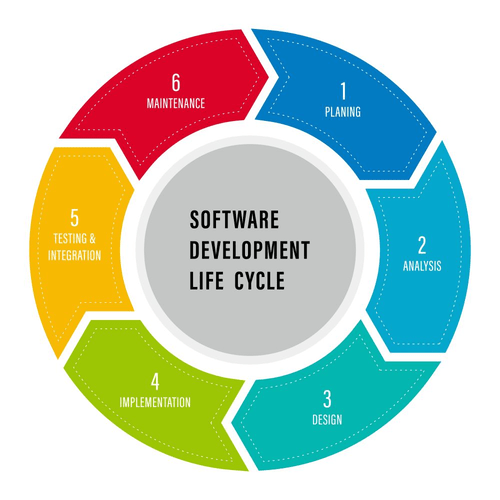Content
Also, team members begin to clearly see others’ strengths and accept their weaknesses. The leader will need to be very accessible during this phase. While people are competing, they are also beginning to open up to each other too. And as they do this, the team begins to establish how they will work together going forwards.

Double down on building personal connections among teammates. When it’s time to celebrate meeting a milestone, consider indulging in a team dinner or day out doing something fun together. And, now that you’ve figured out established practices that help you collaborate effectively, share those with other teams.
That’s part of the reason HR departments task their job candidates with personality tests — to see whether they’d be adequate in terms of behavior and values. Daisy called a lot of shots in the Forming stage, so she emerges as the dominant team leader in this stage. She proposes a clear schedule and takes charge of contacting the local store to see what supplies they can get here, and what supplies they may need to go to the city for.
Stage 1 Forming
Remote Control Keep on top of your work from home life with these tips and ideas from our team to yours. A kanban board gives you a visual overview of all of the tasks for your project, so you can keep an eye on any bottlenecks or areas of pressure. Gallup have been studying relationships at work for over thirty years and their research has consistently found that having a best friend at work leads to better performance. There are a few things you can do to reduce the intensity and duration of your storms. One way is to touch base with your team regularly through short stand up meetings. In Tuckman’s original 1965 paper, 50% of teams actually jumped directly from stage 1 to stage 3, but for those that did not, the duration and intensity of the “storms” were varied.
Although the decreased uncertainty may be beneficial at this stage, too much imposed structure from the outside can create resentment or a feeling of powerlessness among group members. A manageable amount of uncertainty can actually support group cohesion and productivity. For example, more dominant personalities may take early leadership roles in the group that can affect subsequent decisions. Group members’ diverse skill sets and access to resources can also influence the early stages of role differentiation. In the adjourning stage, most of the team’s goals have been accomplished.

AnalyticsGain insight about your company’s meeting frequency, productivity, and feedback culture. StreamsStreams are digital notepads to help you organize projects, share OKRs, and whatever else you dream up. Valencia Higuera is a freelance writer from Chesapeake, Virginia. She has contributed content to print publications and online publications such as Sidestep.com, AOL Travel, Work.com and ABC Loan Guide. Higuera primarily works as a personal finance, travel and medical writer. She holds a Bachelor of Arts degree in English/journalism from Old Dominion University.
Hopefully, the stages of group development will provide greater insight into the inevitable stages you will encounter when a new team comes together. Through understanding and patience, leaders can effectively navigate and reduce the time spent in the earlier stages, guiding a team toward Performing more quickly. Especially for virtual teams, this first stage can feel a bit of a mess. This is why we always recommend paying attention to the onboarding process. If you are introducing a new hire or setting up a team from scratch, the crucial step here is to set up clear communication channels and structure individual tasks.
How To Make Forming Run Smoothly
Team members are motivated to achieve goals set by the team, and they operate competently within established structures. While the forming stage is useful in establishing objectives, members rarely branch out from their individual roles. During this period of team formation, it’s critical that the leader encourages members to go outside https://globalcloudteam.com/ of the comfort zone and explore new ways of working together. The storming stage is the most difficult and critical stage to pass through. It is a period marked by conflict and competition as individual personalities emerge. Team performance may actually decrease in this stage because energy is put into unproductive activities.
Even groups that are relational rather than task focused can increase members’ interpersonal, listening, or empathetic skills or increase cultural knowledge and introduce new perspectives. This is the stage where the team begins to function as a cohesive unit, no longer focused on individual goals. Team members have learned how to express their opinions in a respectful way, communicate displeasure or disapproval in a productive manner, and resolve conflict quickly and efficiently.

In this stage, leadership is shared as the team works toward exceeding standards and continuous improvement. When the clouds part, the group moves from the storming stage to the norming stage of group development. In this stage, the team learns how to work towards a common goal and shared leadership emerges. The storming stage is like the teenage phase of group development – boundaries are tested, and arguments are inevitable. In this stage, individual members vie for leadership roles while others chafe at their team members giving them direction.
Stage Five: Transforming
Even though their early interactions may seem unproductive, they lay the groundwork for cohesion and other group dynamics that will play out more prominently in later stages. I first heard of his stages of team development when I attended advanced leadership training offered by the Boy Scouts of America. Tuckman’s theory is that every group moves through four stages on its way to becoming a high-performing team. By recognizing these stages, we can adapt our leadership style to the needs of the team. In order to move on to the next stage, embolden high-performing team members to step into leadership roles, while taking care to actively involve all team members. To avoid power struggles, this is the time to invest in team building and conflict resolution exercises.
- Although Tuckman’s stages of group development were first written about in 1965, they remain a useful tool even today in learning what creates high-performing teams.
- At the beginning, everyone is excited about being a part of the team.
- SolutionsMeeting agenda softwareCollaborate on meeting agendas, assign action items, and ask for meeting feedback.
- They try to conform to norms because they want to maintain their relationships in the team and they want to meet team expectations.
- However, this stage is crucial if you want your team to succeed — you won’t get far with your project by sweeping vital questions and potential problems under a rug.
- By gaining a better understanding of the 5 stages of team development, you should have the tools you need to help your team collaborate more efficiently and productively.
It is important that groups reflect on the life of the group to learn any relevant lessons and celebrate accomplishments. Team members share their backgrounds, interests, and experiences with the rest of the group, as first impressions begin to form. •Forming – In this stage, students will act positive and polite to one another as they become acquainted with the group.
Forming – as the name suggests – refers to when the team is first formed. At this stage, team members are meeting for the first time, getting acquainted, organizing responsibilities, and trying to find their place within the team. I do think that an individual’s competitive drive can hinder and also foster the groups development. Individuals that are competitive may bring some kind of liveliness or the type of energy to the group that can help accomplish tasks faster.
These bad relationships will cause problems and affect the groups performance later on. In the first stage, storming, it is good to have co-ordinators to bring the group together and create a sense of cohesiveness. If this team was comprised of too many plants in its storming stages, these people could be completing for their idea to be heard. A plants ideas and energy may decrease quickly if there are too many monitor evaluators as these people will motivate the plants by constantly pointing out the flaws in their ideas. Each stage of team development doesn’t necessarily take just as much time as the one that comes after it, nor the one before it.
Advisor Know How: Organizational Development & Tuckmans Theory
They start tolerating the whims and fancies of the other team members. They accept others as they are and make an effort to move on. The danger here is that members may be so focused on preventing conflict that they are reluctant to share controversial ideas. Sometimes also called the termination, mourning, or ending stage, most, if not all, of the goals of the team have been accomplished. The project as a whole is being wrapped up and final tasks and documentation are completed.

Chiefs of StaffTrack key takeaways from executive meetings, enhance alignment across scaling teams, and amplify the CEO’s communication to help the company flourish. Objectives Stay on top of your team’s goals by clearly recording, defining, and tracking the progress of your OKRs in Fellow’s Objectives tool. Roles and processes form four stages of team development the Norming stage continue, with refinements as needed. Organizational leaders generally adjourn a group by holding a debrief, celebrate accomplishments, and acknowledge individuals. Groups that making to the norming stage are more comfortable in themselves and the ability of the group to address the situation or task at hand.
What Is Staff Augmentation? Strategy To Expand Your It Team
Hybrid Work PanelInsights from leaders at Loom, Upwork, Oyster, Because Mondays, and Fellow on how to embrace Hybrid Work. One-on-One GuideThe Art of the One-on-One Meeting is the definitive guide to the most powerful tool for managers. PodcastSupermanagers is for managers, like you, who want to be extraordinary at the fine craft of management. Agenda TemplatesKeep all of your meetings running smoothly with these pre-built meeting agenda templates.
The position of this unofficial leader may also be occupied by the strongest authority figure in the team. They are also overly positive about the project, because it’s new, and new is always exciting. Tuckman only added the fifth and final stage in 1977, together with Mary Ann C. Jensen who had previously reviewed his original paper. 1.The Forming Stage — mainly characterized by team orientation. This is the stage where the dominating group members emerge, while the less confrontational members stay in their comfort zone. At this stage, group members are learning what to do, how the group is going to operate, what is expected, and what is acceptable.
Engagement Get to know your people with Pulse Surveys, eNPS scoring, anonymous feedback and messaging. Here at DistantJob, we have a fantastic multicultural team working from every part of the world. Through the years, we learned that disagreements or cultural differences are impossible to avoid. On the flip side, constructive discussions are the best fuel for our company’s growth. Discuss the characteristics of each stage of group development.
Teams usually develop norms that guide the activities of team members. Team norms set a standard for behavior, attitude, and performance that all team members are expected to follow. Norms are effective because team members want to support the team and preserve relationships in the team, and when norms are violated, there is peer pressure or sanctions to enforce compliance.
Perhaps you’re curious what designing and running a teacher-powered school entails and want more information. Maybe you already have a team in place and are looking for strategies and advice for moving ahead. Perhaps you already run a teacher-powered school and are seeking ways to strengthen your team, modify your processes, or manage internal changes in leadership.
